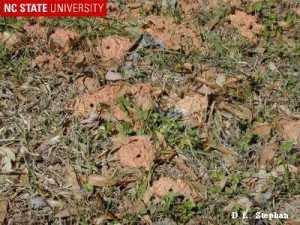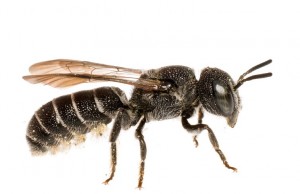Solitary Bees in Burke County
go.ncsu.edu/readext?740656
en Español / em Português
El inglés es el idioma de control de esta página. En la medida en que haya algún conflicto entre la traducción al inglés y la traducción, el inglés prevalece.
Al hacer clic en el enlace de traducción se activa un servicio de traducción gratuito para convertir la página al español. Al igual que con cualquier traducción por Internet, la conversión no es sensible al contexto y puede que no traduzca el texto en su significado original. NC State Extension no garantiza la exactitud del texto traducido. Por favor, tenga en cuenta que algunas aplicaciones y/o servicios pueden no funcionar como se espera cuando se traducen.
Português
Inglês é o idioma de controle desta página. Na medida que haja algum conflito entre o texto original em Inglês e a tradução, o Inglês prevalece.
Ao clicar no link de tradução, um serviço gratuito de tradução será ativado para converter a página para o Português. Como em qualquer tradução pela internet, a conversão não é sensivel ao contexto e pode não ocorrer a tradução para o significado orginal. O serviço de Extensão da Carolina do Norte (NC State Extension) não garante a exatidão do texto traduzido. Por favor, observe que algumas funções ou serviços podem não funcionar como esperado após a tradução.
English
English is the controlling language of this page. To the extent there is any conflict between the English text and the translation, English controls.
Clicking on the translation link activates a free translation service to convert the page to Spanish. As with any Internet translation, the conversion is not context-sensitive and may not translate the text to its original meaning. NC State Extension does not guarantee the accuracy of the translated text. Please note that some applications and/or services may not function as expected when translated.
Collapse ▲Not all bees live in hives like honeybees. In fact , of all the bee species, over 90% are solitary bees. Female solitary bees prepare their own nest in the ground, in cracks or crevices in walls, or in wood. They gather nectar and pollen as food for their own offspring, and provide little or no further care after their eggs are laid.
Solitary bees come in many different sizes, colors and shapes. Common solitary bees are mason bees, plasterer bees, digger bees, sweat bees, cicada killers and carpenter bees. They vary in color from basic black to bright metallic green, blue or red. Some solitary bees can look similar to wasps or hornets which can cause great concern to the homeowner who walks out in to his yard and is surrounded by these “busy bees” as they dig burrows and collect pollen.
Although most live alone, some solitary bees build nests in a sort of neighborhood setting. They each have their own burrow in the ground but they live in close proximity to each other. Solitary bees may nest close together because the site is particularly desirable but each female builds its own nest. They prefer bare spots or sparsely grassed areas that have good drainage and receive morning sun.
Here in Burke County we see several different solitary bees. They aren’t aggressive even though they look mean. Females can sting but only when confined. Chemical control is not successful because the bees don’t live together in a hive or nest. In Burke County we start seeing solitary bees in mid-summer. Three to four weeks after they are first noticed, they’ll be gone. It’s best to just put up with them while they’re here and remember that they are valuable pollinators.

Lawn Bee Infestation

Cicada Killer

Mason Bee




